A lightweight curb-jumper from Down Under…
The Honda CB400F Super Sport — aka Honda 400 Four — has been called Japan’s first real sportbike. In an era when many riders were more interested in straight-line speed and quarter-mile times, the 400F had low handlebars, rear-set footpegs, and a lightweight race-style exhaust — possibly the most beautiful factory pipes ever. While it didn’t have the outright power of its two-stroke rivals, it was more refined and sophisticated, with Honda’s first six-speed transmission and that 408cc, 37-hp SOHC inline four. Says Motorcyclist:
“It was the sleek, purposeful, lithe, and downright sexy 400 Four that best exemplified Japan’s move toward Euro-inspired sporting machines, bikes like Ducati’s 750SS and BMW’s R90S.”
Enter Francesco Tutino, an Italian-born motorcycle professional who’s been in the industry for more than twenty years. In 2012, he moved to Brisbane, Australia, and a year later, a bad accident helped lead him into the custom world:
“My first real experience on custom bikes began in 2013 after I’ve badly crashed my 1993 Harley Softail and built my first cafe racer out of it.”
In 2018, he opened his own workshop, Francis Von Tuto Moto Works, based in the Fortitude Valley. The bike you see here is a ’76 Honda CB400F Super Sport, which Francesco bought from an older man who’d done a restoration years ago, before hanging up his helmet. Already having three bikes with clip-ons in the garage, Francesco had a more versatile build in mind:
“Rather than building another cafe I wanted something more versatile, nothing too extreme but definitely a bike that can jump the kerb without damaging the sump or the headers or take on some light trails with peace of mind.”
We especially love the “Regalorita” influence on the build — meaning “regularity” in Italian, Regolarita was an important discipline in the ISDT championships of the 1970s, and many factories created models specifically for the category. Below, we get the full story on this high-revving four-cylinder “urban scrambler” from Francesco himself, along with some stunning shots from Bevan French (@bevpix)!
Honda CB400F Scrambler: Builder Interview
• Please tell us a bit about yourself, your history with motorcycles, and your workshop.
My name is Francesco Tutino, I’m Italian from Prato (Tuscany) and I live in Brisbane, Australia since 2012. I started working in the motorcycle industry in 2000. Tried a couple of experiments on a Cagiva 750 and Ironhead 1000 when I was in my 20s, which were never properly completed, but my first real experience on custom bikes began in 2013 after I’ve badly crashed my 1993 Harley Softail and I built my first cafe racer out of it. Never had a proper welder or used any panel beating tools before, but creativity, passion, and the drive to put the bike that I’d always had in my thoughts into a rideable machine helped me learn as a self-taught builder in my spare time.
Since then I’ve completed five major builds — two cafes, one street special, a vintage-vibed tracker and my last…an urban scrambler. After I’ve left probably the biggest Australian motorcycle retailer, I’ve made my living working as a part-time contractor for a couple of bike shops and kept fixing and building bikes from my house shed, but I officially started Francis Von Tuto Moto Works in late 2018, and I’m now sub-renting a space out of my good friend’s workshop, Alex Kelly of Skinny’s Garage in the Fortitude Valley.
• What’s the make, model, and year of the bike?
This build is based on a 1976 model Honda CB400F Super Sport.
• Why was this bike built?
It’s a personal project I decided to build after I sold my 750 Four…always wanted to build a Honda four. I’m not into brands in general, but I’ve always liked Honda and I’m probably a bit more attached to them because I used to run a Honda workshop for some time after I’ve completed my apprenticeship back in Florence (Italy).
• What was the design concept and what influenced the build?
Basically for me there’s a specific vision behind each bike. Sometimes it’s the full concept sometimes it’s just a detail. This project started around the wings…those big yellow wings, so big they nearly touch each other on top of the tank, but rather than building another cafe I wanted something more versatile, nothing too extreme but definitely a bike that can jump on the kerb without the risk of damaging the sump or the headers or take on some light trail roads with peace of mind.
• What custom work was done to the bike?
This build actually started off with another bike in November ’18 — still a CB400F ’75 model, but it wasn’t the best donor to start with. It was originally purchased from the sweetest old man who owned it for the last 30 years, and it had been sitting in his garage for the last 10…the real condition of the bike wasn’t very clear on the ad and while standing in front of it, talking to old mate, I realised that apart from the various missing parts, the whole bike went under Brisbane River’s muddy water during the 2011 flood and the once totally restored and blueprinted engine was now seized, parts were lost while moving out of the flooded house and rust got most of the chrome, so…a full restoration was needed. It wasn’t just an easy project, but the old fella’s frustration of not being able to work on it anymore, plus all the lowballers he came across, made me put that bit extra motivation into this project so I went from pulling away to a done deal!
Once the bike was home I started pulling the wheels apart and get them powder-coated, then I got carried away with another long-term project and sort of left it aside. I did purchase a spare engine and slowly kept looking for further bits and pieces until I found a restored and forgotten CB400 Four, a ’76 model in good condition. Similar deal, the guy restored it with the help of a family member a long time ago when he was still 100% mentally and physically able to spend his spare time wrenching and getting creative in the massive shed at the back of his property. Fortunately, when decided to hang up his helmet, he kept the old bike covered and dry, engine had good compression and only minimal rust spots, just a couple of ugly 1980s mods but definitely a very good donor. We’re back in business!
I managed to put the 75 model and spare engine up for sale and recovered a good amount to start off with the ’76. Even if the new donor wasn’t ridden at all after full resto, it still needed work to get back to running condition. Then, once I was able to start it and have her running again, I decided not to revolutionize the original design too much, but to make it an all round enjoyable bike, classic but smart. In my collection there are already three bikes with clip ons, so this 400f will see its bars raised rather than lowered, improved suspension and ground clearance, a flat bench seat for more “regolarita,” but with some technology like LED lighting, digital speedo cluster, and electronic ignition.
Starting from a very healthy bike for the first time, I didn’t have to go through a full engine rebuild (which means two things: lots of money and heaps more time before completion). So I managed to respray and service the still going strong engine and match it with a new Dyna 2000 ignition system, fully rebuilt and tuned carburetors with K&N pods, and exhaust replica of the very iconic 4-into-1 400 Super Sport headers with custom-made uprise megaphone muffler, coated in ceramic black to match the wheels and suspension. And thanks to their off the right side design, they leave good ground clearance, which is important for the new purpose of the bike.
I’ve then personalised the stator cover with a 3D-printed badge with Francis Von Tuto Logo, which has been made by my mate Josh Bailey from Port & Hide and JB Creative — CNC aluminum version is on its way. From front to rear, those massive instruments, indicators and lights were ditched alongside the chromed guards.
At the front I’ve installed mid-height chromed bars with bar end LED indicators, a Daytona speedo and tacho gauge tops the black powder coated triple clamps. For the headlight, I’ve opted for a 4.5 inch super bright LED unit and fabricated a custom U-shaped steel stay to suit. Front guard comes from one of my past build’s “box of ugly original parts” shortened by 6 inches, rewelded and fitted under the lower clamp using a dedicated custom steel bracket, which has been welded at the back of the yoke before proceeding with powder coating.
Forks and brakes are stock, fully rebuilt with genuine components, same as per the wheels, rebuilt and powder coated, a braided brake line and some mods to the front suspensions were made to upgrade the rideability and match rear suspension units, which have been replaced with better performing + 30mm extended Gazi shocks.
The rear end is completed by the short mudguard, same origin as the front one (CD250U) modified to suit the different frame, which only allows room for a number plate and number plate light. Indicators and tail light are located in very small and well executed one piece LED units bolted on the very back end of the chassis. On our way to the main piece of the bodywork we find a beautifully executed and very nostalgic flat seat stitched by north Brisbane upholstery experts Lee Bros –I’m pretty happy with the shape cause it gives the bike that 70s “regolarita'” look.
The bodywork on this bike is reduced to two slim guards tank and side covers, and the fuel tank is definitely the star, a very clean and dent-free piece, which has been re-lined and professionally painted. The color I’ve chosen for tank and side covers is a very fine metallic brown, what I’d call a “coca cola colour,” and inspiration for the artwork came up while at the paint shop choosing between all the varieties or gloss, metallic, candy and so on different colours. I had this vision of two massive yellow wings nearly touching each other on top of the tank, so what better than a super-sized classic Honda logo to take up as much surface as possible? All calculated to fit inside the tank shape. I’m pretty happy about the colour scheme, couldn’t see this bike with any more chrome, I think that the grey in the engine, mudguards and brakes creates enough contrast with the black and brown — the yellow wings are just the cherry on top!
Coming down to the choice of tires I couldn’t go too wide on those rims — also because of the narrow width of the swingarm and forks — and I didn’t want to use anything too knobby, so as not to compromise the rideability. But I still wanted a classic look and Dunlop TT100 are as classic as you can get, and its design really works with wire wheels. So after calculating the space available I’ve chosen 130/80-18 for the rear and 4.10-18 front. The only mods done to the frame are the seat’s hinges, which have been removed.
• Does the bike have a nickname?
This project has got a nickname which explains the nature of the build and it’s called “urban scrambler.”
• Can you tell us what it’s like to ride?
To ride this bike feels very comfy due to the higher bars and being so much taller than the original, good performing shocks and period-correct fresh tyres makes the perfect combo. On this bike, it feels natural to raise the riding position rather than lowering it, so that’s the way I’ve chosen.
• Was there anything done during this build that you are particularly proud of?
I like the fact that this was pretty much the first bike with fairly quick turnover if compared with my other projects which have all been very long term. Also a couple of particulars like the headlight bracket and the shortened guards, but mostly its simplicity, nothing too crazy but very well-balanced, classic but smart.
Follow the Builder
Website: www.francisvontuto.com
Instagram: @francis_von_tuto
Facebook: Francis Von Tuto
Direct website link to this build here.
Photos by Bevan French: www.bevpix.com | @bevpix

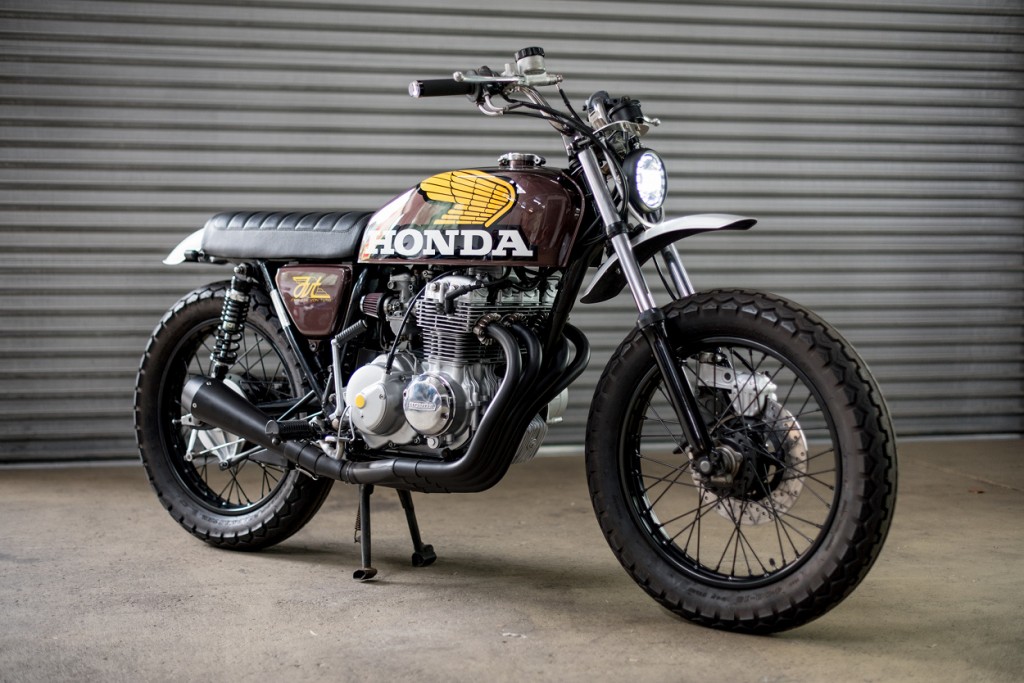




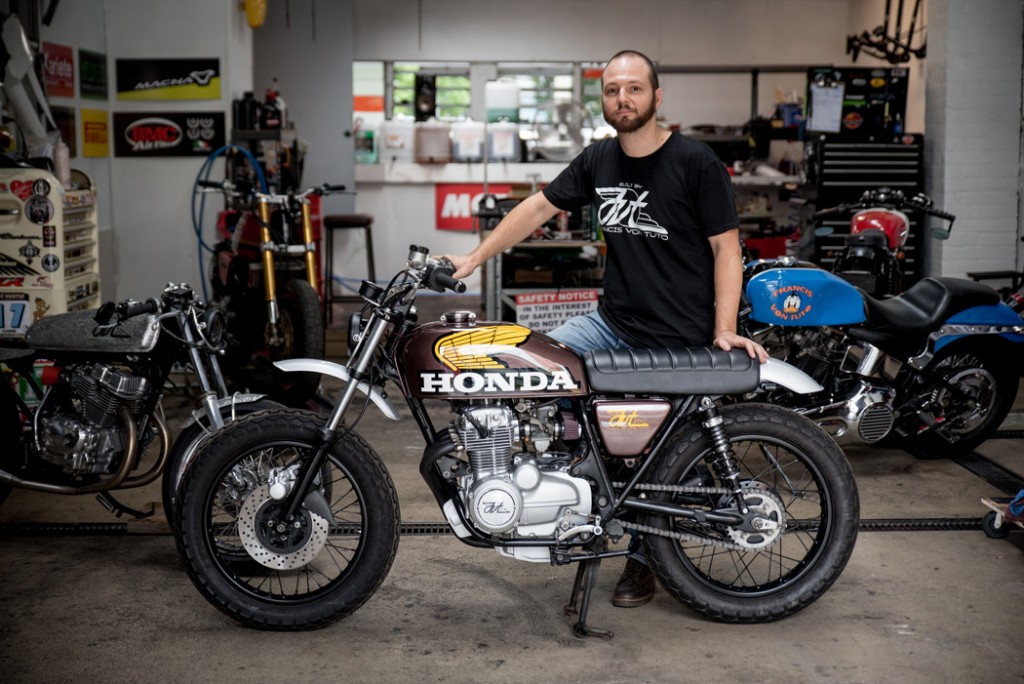
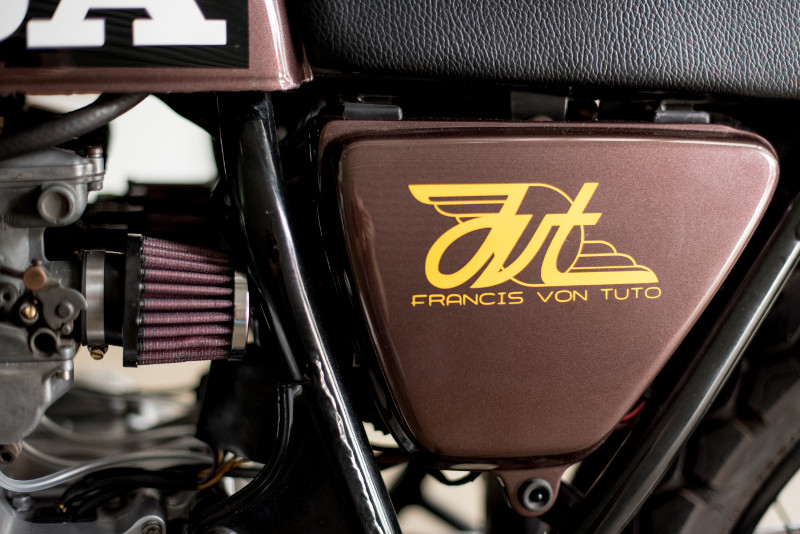






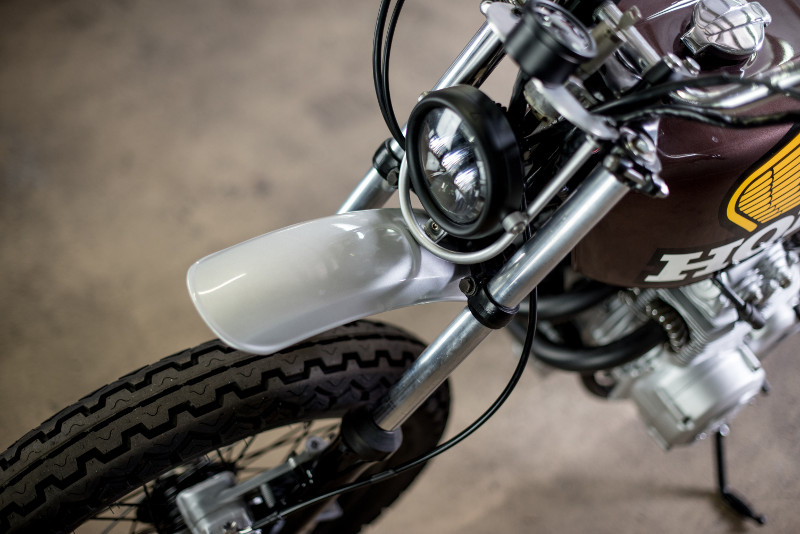








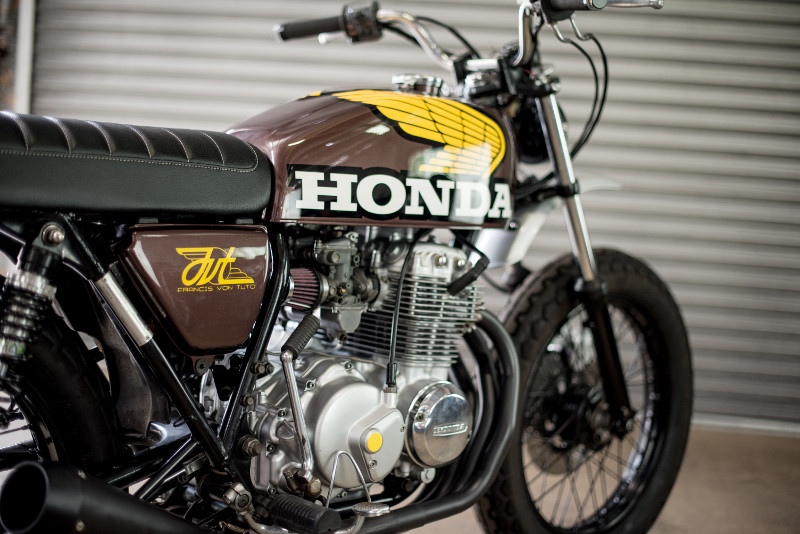

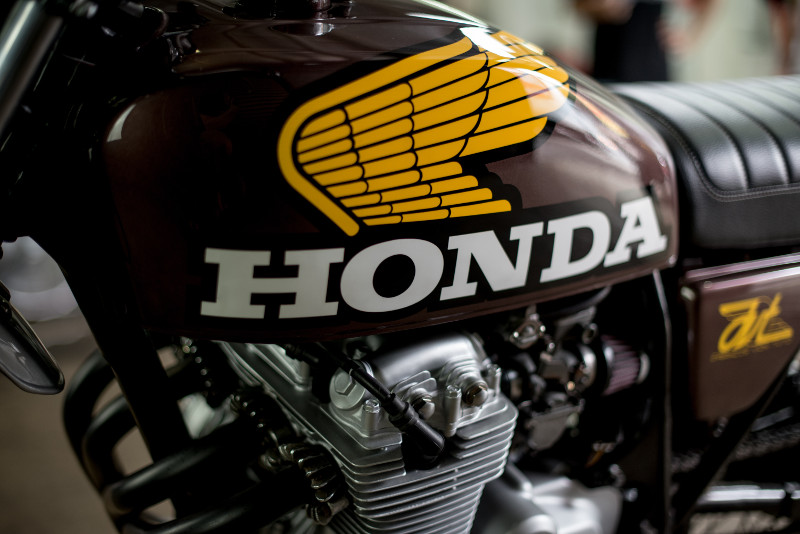
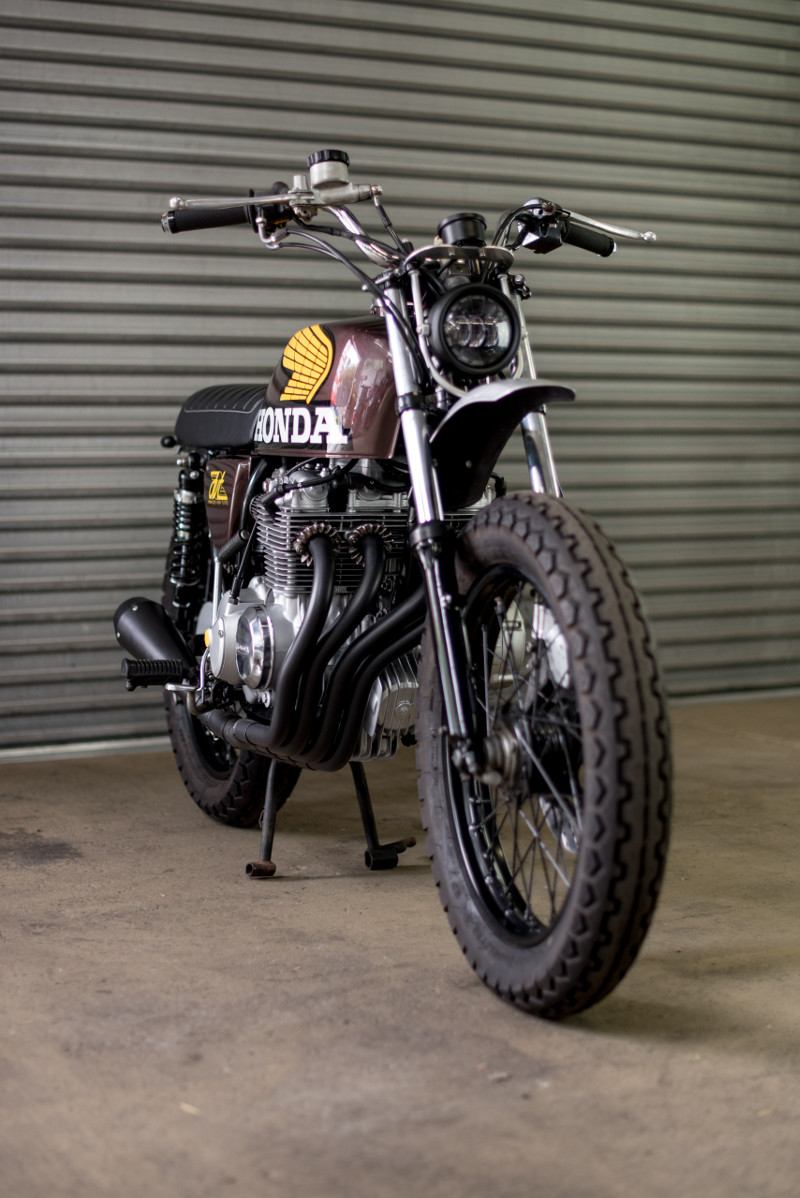

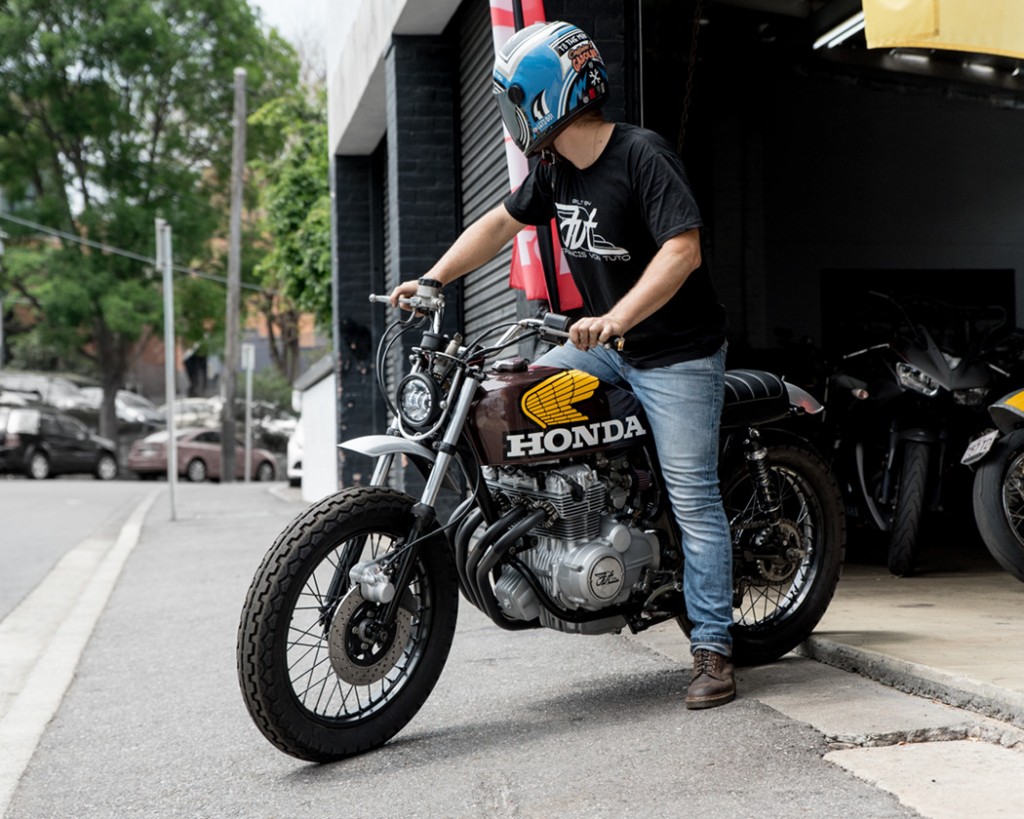






Nice. Glad to see a custom with side covers. The see-through-the-frame trend is so played out.
I appreciate you comment, the side covers were a key factor to keep the the cb400four vibe 😉
Thank you, I agree with you.
What kind of bike is this again? Just teasing beautiful work. Anybody seeing those headers knows exactly what it is though.
thanks GWallace, I’m glad you like it!
Those headers are very iconic and it’s the reason why I did replicated them rather than build a different setup
Francesco! Ti scrivo da Milano
Motoretta veramente simpatica, adoro le piccolo cilindrate specialmente se sono scrambler, adoro anche disegnarle! Mi è rimasto questo… a Milano avere una cafe racer è un problema. Continua così comunque! Gas a martello! sempre